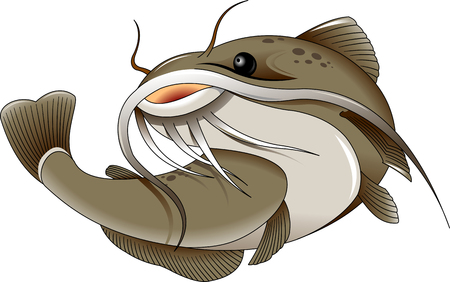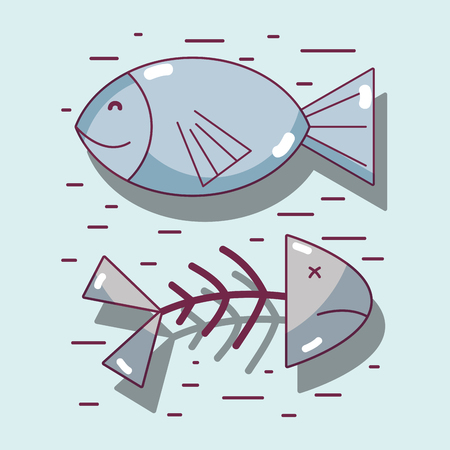1. What is Monofilament Fishing Line?
Monofilament fishing line, often simply called “mono,” is one of the most commonly used types of fishing line in the United States. Its a favorite among both beginner and seasoned anglers thanks to its versatility, affordability, and ease of use. But what exactly is monofilament line made of, and why has it become such a staple in American tackle boxes?
What It’s Made Of
Monofilament fishing line is made from a single strand of synthetic material, usually nylon. This is different from braided or fluorocarbon lines, which are made by weaving multiple strands or using different materials. The nylon used in mono gives it flexibility and stretch, which helps absorb the shock from fighting fish.
How It’s Manufactured
The manufacturing process starts with melting nylon pellets into a liquid form. This melted nylon is then extruded through small holes to form a single filament. Once cooled and stretched, the line gains its strength and diameter. Manufacturers can adjust the properties of the line—like its flexibility, strength, and resistance to abrasion—by tweaking the formula or extrusion process.
Why Anglers Love It
Monofilament has been a go-to choice for American anglers for decades. Its popularity comes from a combination of performance and practicality. Mono is easy to handle, ties knots well, and floats on water, making it ideal for topwater lures or beginners learning the ropes.
Main Features of Monofilament Fishing Line
| Feature | Description |
|---|---|
| Material | Nylon (single strand) |
| Flexibility | High – great for absorbing shocks |
| Visibility | Moderate – more visible in water compared to fluorocarbon |
| Buoyancy | Floats – good for topwater techniques |
| Knot Strength | Excellent – holds knots securely |
| Abrasion Resistance | Moderate – decent durability around rocks and structure |
A Classic Choice for Everyday Fishing
Whether youre casting for bass in a Midwestern lake or surf fishing off a Florida beach, monofilament provides an all-around reliable option. Its user-friendly nature makes it especially popular among weekend warriors and family anglers looking for dependable gear without breaking the bank.
2. Best Situations to Use Monofilament Line
Monofilament fishing line is a go-to choice for many anglers across the United States because of its versatility and forgiving nature. It performs well in a variety of environments and techniques, making it especially popular among beginners and seasoned fishermen alike. Let’s break down some of the best situations where monofilament truly shines.
Freshwater Fishing in Lakes and Rivers
Whether you’re casting for largemouth bass in the Midwest or trout in mountain streams, monofilament is a solid option. Its stretch helps absorb sudden pulls from aggressive fish, reducing the risk of snapped lines, especially when using treble hooks or topwater baits.
Why It Works Well:
- Stretch: Offers shock absorption during sudden strikes
- Visibility: Slightly visible but manageable in stained or murky waters
- Knot Friendly: Easy to tie and holds knots securely
Topwater Fishing Techniques
If youre working topwater lures like poppers or frogs, monofilament’s buoyancy keeps your bait on the surface longer compared to fluorocarbon. This gives you a better shot at triggering explosive surface strikes.
Best For:
- Bass fishing with topwater plugs
- Pike fishing in weedy areas
- Panfish action near vegetation
Surf Casting Along the Coasts
Along the Atlantic or Pacific coasts, many surf anglers rely on monofilament because of its abrasion resistance and ability to handle heavy weights without breaking under pressure. Its stretch also helps buffer strong waves and hard runs from saltwater species like redfish or striped bass.
Benefits for Surf Fishing:
- Casting Distance: Smooth casting performance with minimal line memory
- Shock Absorption: Handles the force of big fish hitting bait hard
- Cost-Effective: More affordable than braid or fluorocarbon, which is helpful when re-spooling often due to sand and salt exposure
Trolling and Live Bait Fishing
Monofilament is a great match for trolling setups, particularly when targeting walleye, lake trout, or king salmon. Its stretch allows fish to take the bait more naturally without feeling immediate resistance.
| Technique | Why Mono Works Well |
|---|---|
| Trolling for Walleye/Lake Trout | Smooth deployment and natural bait presentation |
| Live Bait Rigging (e.g., minnows) | Less tension allows fish to fully take the bait before hookset |
| Casting Crankbaits/Shallow Divers | Mild stretch prevents lure ripping out of fishs mouth |
Pier and Jetty Fishing
If youre dropping bait off a pier or fishing from rocky jetties, monos abrasion resistance helps protect against sharp rocks and barnacles. It also handles vertical fights well thanks to its shock-absorbing properties.
Quick Tip:
If youre unsure what line to use for casual weekend fishing trips with friends or family, monofilament is usually a safe and reliable bet—especially if youre not targeting anything too toothy or powerful.

3. Pros of Using Monofilament
Monofilament fishing line, often referred to as “mono,” has been a favorite among American anglers for decades—and for good reason. Whether youre chasing bass in a Midwest lake or surfcasting off the Florida coast, mono offers several key advantages that make it a go-to choice for both beginners and seasoned pros. Let’s break down why monofilament is still holding its ground in tackle boxes across the country.
Stretch That Works in Your Favor
One of the standout features of monofilament is its natural stretch. This elasticity acts like a shock absorber during sudden strikes or when fighting aggressive fish. For example, if youre targeting largemouth bass and it hits your bait hard, that stretch can prevent the hook from tearing out of the fishs mouth.
Excellent Knot Strength
Knot strength matters when you’re dealing with feisty fish or casting repeatedly. Mono holds knots exceptionally well, which gives you confidence your setup won’t fail under pressure. Whether you’re tying a Palomar knot or an improved clinch knot, monofilament makes it easy to get a secure hold without slipping.
Easy to Handle and Cast
Monofilament is softer and more flexible than other types of fishing lines like fluorocarbon or braid. This makes it easier to manage on spinning reels, especially for new anglers learning how to cast accurately. It lays smoothly on the spool and tends to cause fewer line tangles, which means more time fishing and less time fixing bird’s nests.
Budget-Friendly Choice
If youre looking for value, monofilament is one of the most affordable fishing lines on the market. This makes it ideal for weekend warriors, families introducing their kids to fishing, or anyone who wants reliable performance without breaking the bank.
Real-World Applications
| Fishing Scenario | Why Mono Works Well |
|---|---|
| Bass Fishing in Freshwater Lakes | The stretch helps prevent hook pull-outs during aggressive strikes. |
| Panfish or Kids First Fishing Trip | Soft feel and easy handling make it great for beginners. |
| Surfcasting from Shore | Knot strength and affordability are perfect for long casts and replacing line as needed. |
| Trolling in Saltwater | Shock absorption helps maintain steady tension during boat movement. |
Quick Recap: Why Anglers Love Mono
- Stretch: Absorbs shock from strong strikes and fights.
- Knot Strength: Reliable holds with common fishing knots.
- User-Friendly: Ideal for all skill levels with fewer tangles.
- Affordable: Great option for budget-conscious anglers.
If you’re looking for a versatile line that performs well in a variety of conditions without costing a fortune, monofilament continues to be a solid pick in many American fishing scenarios.
4. Cons and Limitations
While monofilament fishing line is a go-to choice for many anglers due to its affordability and versatility, it does come with some drawbacks that are worth considering—especially when compared to fluorocarbon and braided lines.
Memory
One of the biggest complaints about monofilament is its “memory.” This refers to the lines tendency to retain the shape of the spool, which can lead to coils, tangles, and reduced casting distance. High memory can make your line more difficult to manage, especially after its been sitting on the reel for a while.
UV Sensitivity
Monofilament is more susceptible to damage from ultraviolet (UV) rays than other types of fishing line. Over time, exposure to sunlight can weaken the line, making it more prone to breakage. If youre fishing regularly under strong sun, you may need to replace your mono line more frequently.
Abrasion Resistance
Compared to fluorocarbon and braided lines, monofilament has lower abrasion resistance. This means its more likely to get nicked or cut when rubbing against rocks, docks, or sharp-edged structures underwater. If youre fishing in heavy cover or around structure, this could be a concern.
Comparison Table
| Feature | Monofilament | Fluorocarbon | Braided Line |
|---|---|---|---|
| Line Memory | High | Low | Very Low |
| UV Resistance | Poor | Excellent | Good |
| Abrasion Resistance | Moderate | High | Very High |
| Knot Strength | Good | Moderate | Poor (can slip) |
| Sensitivity | Fair | High | Very High |
Stretch Factor
Mono stretches more than other lines. While this can be helpful for absorbing shock from hard-fighting fish, it also reduces sensitivity. That means you might not feel light bites as easily as you would with braided or fluorocarbon lines.
Lifespan and Maintenance
You’ll likely need to replace monofilament more often than other lines. Between UV exposure, water absorption, and general wear and tear, mono doesnt last as long—especially if youre out on the water frequently.
Bottom Line:
If youre just starting out or looking for an all-around line that won’t break the bank, monofilament is still a solid option. But knowing its limitations helps you decide when its the best tool for the job—and when you might want to consider something stronger or more durable.
5. Choosing the Right Monofilament Line
When it comes to picking the right monofilament fishing line, there’s no one-size-fits-all solution. The best choice depends on a few key factors like pound test, brand, line clarity, and what type of fishing you’re doing. Here’s a breakdown to help you make the best decision for your next trip—whether youre casting in a Florida freshwater lake or trolling off the California coast.
Pound Test: Match It to Your Target Species
The pound test refers to how much weight the line can handle before breaking. Choose a strength that matches the fish you’re after:
| Target Fish | Recommended Pound Test | Fishing Environment |
|---|---|---|
| Panfish (Bluegill, Crappie) | 2–6 lb | Lakes, ponds, slow rivers |
| Bass (Largemouth, Smallmouth) | 8–12 lb | Lakes, rivers with structure |
| Catfish | 12–20 lb | Muddy rivers, reservoirs |
| Trout | 4–8 lb | Clear streams, mountain lakes |
| Saltwater Inshore (Redfish, Snook) | 10–20 lb | Bays, flats, estuaries |
Brand Matters: Stick With Trusted Names
Not all mono lines are created equal. American anglers often go with brands like Berkley Trilene, Stren, or SpiderWire for their consistency and performance. These brands have been around for decades and offer specialized lines for different fishing styles.
Popular Monofilament Brands in the U.S.
- Berkley Trilene XL: Great for smooth casting and general use.
- Stren Original: Known for knot strength and durability.
- Sufix Elite: Low memory and high tensile strength.
- P-Line CXX: Extra tough option for heavy cover fishing.
Line Clarity: Invisible or Bold?
The color or clarity of your mono line can make a difference depending on water conditions:
| Water Type | Recommended Line Color | Why It Works |
|---|---|---|
| Clear Water (Lakes/Streams) | Clear or low-visibility blue | Keeps the line invisible to wary fish like trout or bass. |
| Muddy or Stained Water | Hi-vis yellow or green | Easier to track your line above water without spooking fish. |
| Night Fishing | Glow-in-the-dark or fluorescent colors | Makes it easier to monitor movement in low light conditions. |
Selecting Based on Intended Use
Baitcasting Reels vs Spinning Reels
- Baitcasting reels: Opt for stronger mono with abrasion resistance. 12–20 lb test is common for bass anglers using jigs or crankbaits.
- Spinning reels: Lighter mono works better here. Go with 6–10 lb test for finesse techniques like drop-shotting or casting small lures.
Trolling vs Casting vs Still Fishing
- Trolling: Choose a mono with good stretch to absorb shock when fish strike at high speeds.
- Casting: Look for low-memory lines that won’t coil up after sitting on your spool.
- Sitting with bait (still fishing): A versatile, all-purpose mono like Trilene XL works great here.
The right monofilament line helps you get more bites and land more fish. By understanding how pound test, brand quality, visibility, and usage style come into play, youll be better prepared no matter where you’re fishing in the U.S.—from Texas lakes to the Pacific Northwest coastline.
6. Monofilament Maintenance and Longevity
Taking care of your monofilament fishing line is key to keeping it in top shape and avoiding frustrating gear failures out on the water. Monofilament (or “mono”) has great stretch and is easy to handle, but it can wear down over time from sunlight, water, and regular use. Here’s how you can store, check, and replace your mono line to get the most out of it.
Proper Storage Tips
Storing your mono line correctly can extend its life significantly. UV rays from the sun are one of monofilaments biggest enemies, so keep it away from direct sunlight when not in use.
Storage Do’s and Don’ts:
| Do | Dont |
|---|---|
| Store in a cool, dark place | Leave it exposed in your car or boat |
| Keep spools in original packaging or a tackle box | Let it sit near heat sources like radiators or heaters |
| Use line spoolers to avoid kinks and tangles | Wrap loosely around rods or handles |
How to Check Your Mono Line
A quick inspection before every trip can save you from lost fish or broken lines. Run your fingers along the line to feel for any nicks or abrasions. If the line feels rough or shows discoloration, its probably time for a change.
Signs Your Line Needs Replacing:
- Fraying or cuts along the line
- Cloudy appearance instead of clear or shiny
- Loses strength when tied into knots
- Brittle or stiff texture
When and How Often to Replace Mono Line
The replacement schedule depends on how often you fish and where youre fishing. Saltwater anglers may need to change their line more frequently due to harsher conditions.
General Replacement Guidelines:
| Fishing Frequency | Recommended Replacement Time |
|---|---|
| Weekend angler (1–2 times/month) | Every 6–12 months |
| Regular angler (weekly) | Every 3–6 months |
| Heavy use or saltwater fishing | Every 1–3 months |
A little bit of routine maintenance goes a long way. By storing your monofilament properly, checking it regularly, and replacing it when needed, you’ll keep your gear reliable and ready for whatever bites next.


